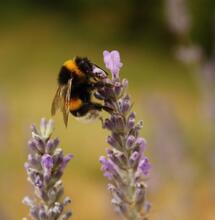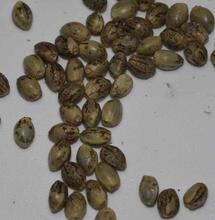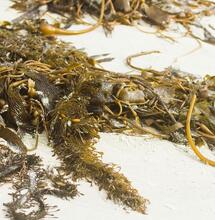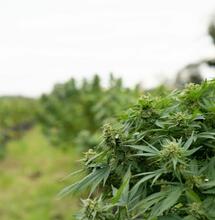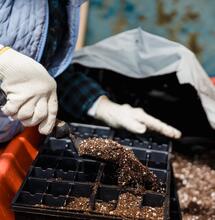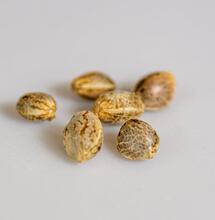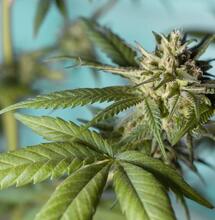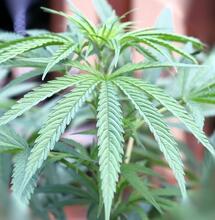Cannabis Botany Terminology for Beginners: Part I
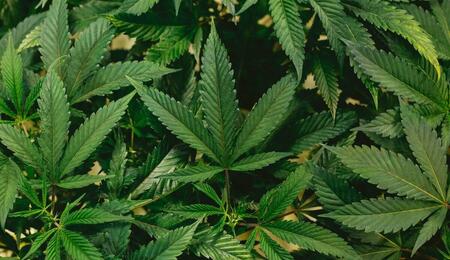
If you are planning to grow marijuana, it's good to know which part is what on the plants in your garden. Our new series explores common words used to describe Cannabis plant parts so that you may maximize your reading on the subject.
For those readers who are new to the Cannabis scene, what follows is a helpful list that will introduce you to the most basic terms relating to the botany of the plant.
Anther
Anthers are oval-shaped plant structures that dangle from filaments below the sepals on a male Cannabis flower; the filament and anther are collectively known as the stamen. Each flower has five sepals that are typically green but are sometimes purple. Usually forming groups of ten or so flowers, anthers are capable of releasing hundreds of millions of pollen grains and also contain resin glands, albeit far fewer than on female Cannabis inflorescence. Mature anthers often resemble tiny bunches of bananas.
Auto-Flowering
Normal Cannabis plants grow under eighteen hours of light (springtime) and flower when the amount of light is reduced to twelve hours (autumn). Auto-flowering Cannabis strains contain specific genetics, typically from ruderalis varieties, that encourage them to simultaneously grow and flower, allowing cultivators to conserve grow room space and achieve a faster yield.
Back-Cross
A back-cross, sometimes abbreviated as 'BX', refers to crossing a strain back with one of its original parents in order to breed more of a particularly desirable trait into a new strain or variety.
Bract
A leaf stipule that is located on both sides of the axis of the petiole or leaf stalk of Cannabis plants, often mistaken for the female pistillate calyx. This structure appears as a narrow, pointy protrusion just under a half-inch long, positioned near to the calyces [alt. calyxes].
Buds
The female flowers of Cannabis are often called buds but the floral structures or inflorescence are actually a collection of flowers. Only the female flowers are consumed, as this is where the majority of the active ingredients are located, and is also where the seeds will grow if a female flower is pollinated. Buds may form up to several inches long and appear to be shaped like an egg, a golf ball, teardrop, pine tree or wheat, depending upon the strain.
Calyx
A calyx is a pistillate collection of inflorescence sepals shielding the stigma, style and ovule in female Cannabis flowers or the sheath-like covering around the staminate structures of a male Cannabis flower. Upon the appearance of the former, female gender may be determined; the appearance of the latter compels most growers to discard that particular plant, unless pollination and subsequent seeds are desired. The first occurrence of these structures is usually visible at the internodes of the plant.
Cannabinoids
Cannabinoids are the chemical agents responsible for the unique effect that the user experiences from different types of weed. Cannabinoids may be either active or inactive. These are found primarily in the trichomes or resin glands of the female flowers and work in conjunction with each other to treat myriad medical ailments.
Cannabis
The real name for weed is Cannabis spp., typically Cannabis sativa L. or Cannabis indica L. While other types certainly exist, these two are the primary families of pot plants cultivated around the world.
CBD
Cannabidiol is rapidly becoming known in the industry as a desirable cannabinoid. Exhibiting opposing traits to the better-known THC, CBD imparts a relaxed, sleepy, 'body' feeling, leaving the user 'stoned' rather than 'high'.
CBN
Of the three most commonly-occurring cannabinoids, cannabinol is perhaps the least-known. Primarily a metabolite of THC, CBN is only mildly psychoactive.
Clone
Also known as cuttings, clones are specially-selected portions of plants that are rooted and grown into full-sized offspring. Clones are cut from 'mother plants' that exhibit desirable traits, such as flavor, yield, flowering period and effect.
Cola
Cola is the layman's term for the raceme or cluster of female flowers - what many folks think of as the large compound buds on each branch tip. Racemes are non-branched, indeterminate inflorescence that bear pedicillate flowers (those with short flower stalks, called pedicels). The older flowers are typically located towards the bottom of the raceme, with newer flowers sprouting as the shoot grows. In Cannabis, this action elongates the cola into a large bud; colas may reach a foot or more in length.
Cotyledon
Sometimes called seed leaves, cotyledons are the first set of tiny leaves that emerge from a germinating seed. These leaflets are small and round and do not look like Cannabis leaves but are followed by the traditional serrated, pointy leaves for which Cannabis is known.
Cross
A cross is when two different plants (sometimes but not usually the same variety) are bred together to create a new strain. Crosses may be intentionally completed by breeders, or accidentally created if a male plant is left in with flowering females.
Cymes
Also referred to as cymose panicles, these are the loose clusters of ten or so male Cannabis flowers that sprout on tiny stalks and their lateral branches. Immature cymes often resemble tiny clusters of grapes.
Genotype
Cannabis genotypes refer to the specific genetic content of a particular Cannabis strain. For example, Power Plant cannabis has classic South African sativa genetics.
Feminized
Since only the female flowers of pot plants are consumed, some breeders have created varieties that will only exhibit female characteristics. The growing plants look like normal weed, but when they flower, the objective is to receive only female flowers instead of the usual fifty-fifty male-to-female ratio that nature produces.
Flowers
The fluffy, tree-like structures on mature female Cannabis plants are flowers, which are the only parts of the plant that people smoke or otherwise consume. The tiny clusters of ball-shaped blooms on male plants contain pollen sacs. Both are usually only visible when the plant is pre-flowering or 'in flower', which occurs when the light cycle recreates an autumnal spectrum, typically red-toned and only twelve hours of light.
Haze
Within the sativa family of Cannabis plants lies the haze category - while consumption of sativas results in a 'high', happy feeling, the highest a user can get is from the haze family. Haze varieties hail from the equator and are extremely tall, thin, graceful plants with narrow leaves, a lighter-green complexion and slightly smaller, widely-spaced flowers.
Hemp
Although it looks like a giant field of weed, hemp plants cannot be smoked, as they contain completely different cannabinoid ratios than the marijuana grown for and sold at dispensaries. Industrial hemp is used to produce over twenty-thousand products, including rope, paper, textiles, fuel and plastic. Some people falsely believe that hemp refers to the stalk of smoke-able Cannabis, however, hemp plants are a subspecies of Cannabis. The entire hemp plant is useable, whereas only female Cannabis flowers are harvested. Hemp stalks can produce biofuels, building materials, fabric and plastics; hemp seeds are cold-pressed to manufacture healthy hemp seed oil and food products; hemp flowers are used to make medicines.
Hybrid
A hybrid results from crossing two or more Cannabis strains to create a new variety. Hybrids typically do not impart as distinct of an effect as pure varieties, which are now more difficult to find due to mass hybridization.
Indica
One of two main subsets of Cannabis plants (the other being sativa), indicas make the user feel relaxed, sleepy and stoned. Indicas are typically short and bushy, with wide, dark-green finger leaves and thick, dense flowers. Originating from regions such as India, Nepal and Afghanistan, indicas are increasingly popular among dispensaries for patients requiring muscle relaxation, sedation or an anti-spasmodic.
Inflorescence
Cannabis flowers are known scientifically as inflorescence and can appear as either dioecious (individual male and female flowers) or monoecious (inter-sex plants, colloquially called hermaphrodites).
Internode
The intersection of lateral branches with the main stalks of Cannabis plants are known as internodes. This is typically the earliest location of the flowers - male or female - and is thus where most gardeners first look in order to sex their plants. Clones are usually cut just below an internode.
Landrace
Strains that are indigenous to a particular geographical region and contain pure genetics are known as landrace varieties. These were originally used to breed the modern hybrids, although they are now much more difficult to find.
Marijuana
A slang term for Cannabis, marijuana was popularized by William Randolph Hearst in a yellow journalism attempt to racially associate marihuana use with negative Mexican stereotypes. Derived from the Revolution-era version of the satirical folk song La Cucaracha, Hearst was angry that 800,000 acres of his land - intended for growing trees as raw material for his paper mills and subsequent newspaper production - had been destroyed by Pancho Villa's troops. Treating marijuana as a derogatory term allowed Hearst to demonize the use of the substance in a push-back against hemp, which was threatening to overtake timber as a paper source.
Mother Plant
A plant that has been carefully selected for specific traits (such as strain, flavor, effect, flowering time and yield), which remains in the vegetative or growth phase. Clones are taken from mother plants, then rooted and grown/flowered, producing a harvest while maintaining the mother genetics.
Continue reading Part II here and learn about sativas, trichomes and more!
